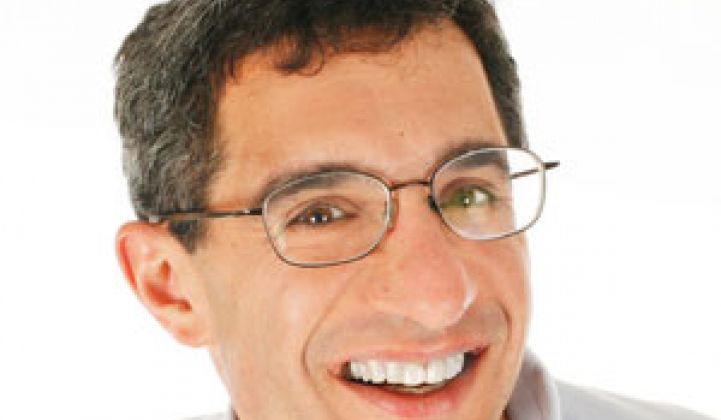We need a Manhattan Project in energy. I think I’ve heard that about, err, 1,752 times.
I believe I first heard it from Craig Barrett, then CEO of Intel, in an interview in early 2004. Then Steve Chu, the Nobel prize-winning physicist who runs Lawrence Berkeley Labs, said it in a speech to a small group a few months later. Coming from them, the statement had power – here were two people at the top of their field with well-earned reputations for large-scale problem solving.
Since then, though, it’s become a staple of speeches and casual conversation. The idea is simple. To curb global warming and energy exports, the government should heavily fund research into petroleum alternatives – solar technology and the like. Attract the world’s brightest minds with grants and the dream of scientific achievement and we can solve one of the most pressing issues facing the globe.
I’m all for massively goosing government-sponsored research, but I think the concept of linking our current dilemma to the Manhattan Project deludes people. And the more they say and hear it, the more deluded they become.
Why? The allure of good menswear. The number of people still alive with working, actual knowledge of the Manhattan Project could probably barely fill a Ken Burns miniseries. The rest of us know about the scientific effort to build the atomic bomb from made-for-TV movies.
From that vantage point, it looked easy: Round up a bunch of European immigrants, stick them in a lab in the middle of the desert and then let them smoke as much as they want. In three years, they’ll come up with a weapon of awesome destructive power. Mission Accomplished.
And they were all good dressers, with ties and fedoras everywhere. It was casual elegance that wiped out the Third Reich.
The movies, however, always leave out one salient point. The government gathered these scientists in the desert because we didn’t know we were going to win. Large numbers of men between the ages of 18 to 30 were dying on a daily basis. Imagine if everyone in the U.S. had a relative in the Iraq war. The closest most people get to today’s war is knowing someone who is in the reserves. And nearly every one of those scientists knew they could be executed if things went the wrong way.
You also hear “We need a new New Deal” occasionally, and in a lot of ways it seems to fit the bill better. The New Deal was an attempt to answer a slowly simmering mishmash of problems with multiple, often murky causes.
But again, fashion memory gets in the way. When most Americans think of the New Deal, they think of photos taken by Dorothea Lange. And their first thought is, “Those people actually look pretty good.” True, and that angular, muscular physique was achieved through near starvation. And don’t forget – a lot of the subjects of her photos lived in Oklahoma.
Given the choice between the obliteration of several species of mammals and living in a state with a low humans-to-Whole Foods ratio, a lot of green advocates would secretly vote to go Pleistocene.
Ominously, the best metaphor for our condition, I think, came from Richard Smalley, the former professor of Chemistry from Rice.
Smalley came to prominence by finding the Buckyball (he got a Nobel for it). Later, he used his fame to become one of the early advocates of alternative energy. He told me in an interview – again in 2004 – that he once felt like the black sheep at gatherings at Houston country clubs. As time passed and studies piled up, even high-level oil execs were beginning to accept the challenges of the future.
"My guess is that this won't become a big issue unless there is a thalidomide event," Smalley said. "We will have to see in the rear-view mirror that we are past the peak in worldwide oil production."
Smalley died a few months later.
The views in this opinion piece are not connected with Greentech Media News.



